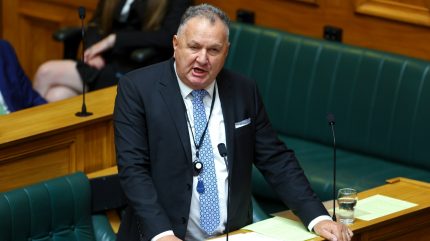
The New Zealand government is considering a second application for a prospecting permit to mine seabeds off the western coast of Taranaki.
Officials are weighing up an application from Ngarara Exploration Limited (NEL) to mine for vanadium – a metal increasingly viewed as a safer and more renewable alternative to lithium in batteries.
NEL’s plans for the South Taranaki Bight area has aggravated a heated debate over the damage deep-sea mining inflicts on New Zealand’s marine ecosystems, fishing industry and local communities.
NEL follows Trans-Tasman Resources (TTR), an Australian mining giant already pursuing approval to extract 50 million tonnes of iron sands just off the Taranaki coastline in a protracted, back-and-forth battle with the government in Auckland.
Greenpeace joins local groups’ criticism of deep-sea mining in New Zealand
Greenpeace has added its voice to the sharp criticism for NEL, TTR and the New Zealand government’s seabed mining ambitions, which “threaten to turn the seas around Aotearoa [New Zealand] into an open-cast mine”, it says.
In a statement, the environmental NGO said: “Greenpeace has long-opposed TTR’s attempts to mine 50 million tonnes of seabed in a 66 square kilometre area in the South Taranaki Bight every year for 35 years to access five million tonnes of iron ore and dump the rest back into the ocean.”
Access the most comprehensive Company Profiles on the market, powered by GlobalData. Save hours of research. Gain competitive edge.

Your download email will arrive shortly
We are confident about the unique quality of our Company Profiles. However, we want you to make the most beneficial decision for your business, so we offer a free sample that you can download by submitting the below form
By GlobalData
Greenpeace also pointed to the catastrophic consequences for marine life in the South Taranaki Bight, naming the pygmy blue whale and critically endangered Māui dolphin as particularly vulnerable to seabed mining.
NEL’s Director Andrew Stewart – formerly the CFO of TTR – has been a target of much of the backlash.
Campaigners accuse Stewart and NEL’s other top brass of exploiting New Zealand’s oceans, lands and indigenous groups to boost the firm’s topline.
“It adds insult to injury having mining industry CEOs like NEL’s Andrew Stewart appropriate Māori company names to greenwash their pollution and destruction by mystifying their intentions with Indigenous names and the values and worldviews they imply,” according to Juressa Lee, campaigner at Deep Sea Mining.
“It’s clear wannabe seabed miners are queuing up to plunder and destroy precious marine life as a result of the Luxon government’s Fast Track Wrecking Bill, and the low bar it has now set.”
New government, new minerals strategy
There has been a gradual rollback of previous Prime Minister Jacinda Ardern’s environmental policies under Christopher Luxon, a former business executive who said his main priority is to improve the New Zealand economy when he gained office last October.
At the forefront of this shift is the proposed draft for New Zealand’s new Minerals Strategy, released last week.
Shane Jones, Minister for Oceans and Fisheries, said the strategy “will put in place actions that will lead us on an export-led growth pathway to double the sector’s exports to $2 billion by 2035”.
“Currently, New Zealand’s production is limited to a handful of minerals and metals. Our vast mineral reserve – and the role it could play in transforming our future – remains largely unexplored,” Jones added. “Other countries use their minerals sectors as cornerstones of their economy to support the sustainability of their regions, to increase resilience, and to boost prosperity.”
Jones originally launched the draft strategy for New Zealand’s minerals sector in May.
Speaking at a community meeting in Blackball on New Zealand’s west coast, he said: “Today, in the heart of mining country, I am telling Kiwis they are back in business. No longer will these communities with rich histories intertwined with mining be told they cannot utilise the rich mineral endowments contained in their land”.
Sign up for our daily news round-up!
Give your business an edge with our leading industry insights.




